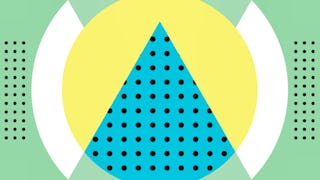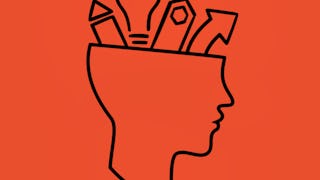This is a course aimed at making you a better designer. The course marries theory and practice, as both are valuable in improving design performance. Lectures and readings will lay out the fundamental concepts that underpin design as a human activity. Weekly design challenges test your ability to apply those ideas to solve real problems. The course is deliberately broad - spanning all domains of design, including architecture, graphics, services, apparel, engineered goods, and products. The emphasis of the course is the basic design process: define, explore, select, and refine. You, the student, bring to the course your particular interests and expertise related to, for instance, engineering, furniture, fashion, architecture, or products. In prior sessions of the course about half of the participants were novices and about half had prior professional design expertise. Both groups seem to benefit substantially from the course. All project work is evaluated by your peers -- and indeed, you will also be a peer reviewer. This format allows you to see an interesting collection of projects while getting useful feedback on your own project.



Design: Creation of Artifacts in Society

Instructor: Karl T. Ulrich
63,408 already enrolled
Included with 
(341 reviews)
Details to know

Add to your LinkedIn profile
See how employees at top companies are mastering in-demand skills


Earn a career certificate
Add this credential to your LinkedIn profile, resume, or CV
Share it on social media and in your performance review

There are 6 modules in this course
This module was designed to introduce you to the design process and to reinforce the critical role that user needs play in good design. You'll learn that design is conceiving and giving form to artifacts that solve problems, and also how to recognize and identify a gap in a problem. You'll explore what defines what users need, as well as ways to use those needs toward product design. By the end of this module, you will have begun your own design process by identifying 10 problem gaps and submitting them for feedback from your peers. You will also do a "5 Whys" exercise to help you determine the best design problem for you to solve in your final design project.
What's included
9 videos2 peer reviews1 discussion prompt
In this module, you'll deliver your customer needs and learn the basic principles of drawing for product design: a necessary skill for any designer. The module begins with another peer review, this time on customer needs. This assignment requires you to conduct interviews with potential customers, and to come up with a list of at least 30 user needs. Given the time-intensive nature of this assignment, we suggest you begin it as soon as possible. As you conduct your interviews and begin your list of user needs, you can start watching the drawing videos, which will guide you through the processes of presenting your design in a clear, easily accessible format. By the end of this module, you'll be able to identify the main customer needs your design will address, and also be able to present your design as a drawing which employs the best practices of drawing for design.
What's included
3 videos2 peer reviews2 discussion prompts
The goal of this module is to move from defining the problem to designing a solution. You'll begin by learning about the exploration phase, and you will exit this phase with a number of design concepts for peer review. You'll also learn how to decompose a design to evaluate its overall function, and essential process in creating good design essential to the life of your design. Finally, you'll learn how to critically examine past design artifacts to inform your current concepts so that you can sensibly differentiate your product. By the end of this module, you'll have created 10 solid design concepts, and you will have received feedback on those concepts so that you can move to the next phase of the design process: prototyping.
What's included
8 videos1 reading1 peer review1 discussion prompt
This module was created to help you understand the selection process so that you can choose one design for prototyping. You'll learn key techniques for evaluating your design concepts, including the selection matrix, and the scoring matrix. And once you've selected some designs, you will also learn the uses and value of prototyping. You'll explore how prototypes are used to answer questions, to communicate and to distinguish milestones in the design process, and you will also work through the prototyping process so you can begin building your own, which you will submit for peer review. By the end of this module, you'll have selected one or more design concepts for prototyping, built prototypes, and received feedback on them from your peers. You'll also get to see some of your peers' designs as well.
What's included
10 videos2 peer reviews1 discussion prompt
Now that you’ve identified what concept you want to explore, this module will explore the aesthetics of design so that you can refine your prototypes to be as aesthetically pleasing as possible. You'll learn how aesthetics are used in design, and how they motivate reactions toward artifacts overall using a real-world example. You'll also learn how you can apply these aesthetic principles to your own prototype, so that you can make your prototype more appealing and pleasing to potential customers. By the end of this module, you'll be prepared to implement aesthetic changes to your existing prototype so that you can be ready to submit your final design project for review in the following module.
What's included
8 videos1 discussion prompt
In this module, you will submit your final project for review. You'll then evaluate the work of five (5) of your peers and receive feedback which you can use for the next iteration of your design. By the end of this module, you will have created a reasonable prototype, and received critical feedback on how to redesign your prototype so that you know which directions to purse should you continue working on this project after the conclusion of this course.
What's included
1 peer review1 discussion prompt
Instructor

Offered by
Explore more from Entrepreneurship


California Institute of the Arts


University of Virginia


The University of Sydney


University of Michigan
Why people choose Coursera for their career




Learner reviews
341 reviews
- 5 stars
80.05%
- 4 stars
11.43%
- 3 stars
2.93%
- 2 stars
2.34%
- 1 star
3.22%
Showing 3 of 341
Reviewed on May 29, 2020
I thoroughly enjoyed & learnt about artifact designs, the video classes were apt & easy to follow .
Reviewed on Aug 15, 2020
Easy to learn & I learn design concepts and also explored purposes behind objects. Now I can refine what goal or gap of a problem i,m trying to solve.
Reviewed on May 8, 2020
I really liked the course, boosted my design process and gave me a sense of order.I they would add more info about the process in graphic design.
New to Entrepreneurship? Start here.

Open new doors with Coursera Plus
Unlimited access to 10,000+ world-class courses, hands-on projects, and job-ready certificate programs - all included in your subscription
Advance your career with an online degree
Earn a degree from world-class universities - 100% online
Join over 3,400 global companies that choose Coursera for Business
Upskill your employees to excel in the digital economy
Frequently asked questions
Access to lectures and assignments depends on your type of enrollment. If you take a course in audit mode, you will be able to see most course materials for free. To access graded assignments and to earn a Certificate, you will need to purchase the Certificate experience, during or after your audit. If you don't see the audit option:
The course may not offer an audit option. You can try a Free Trial instead, or apply for Financial Aid.
The course may offer 'Full Course, No Certificate' instead. This option lets you see all course materials, submit required assessments, and get a final grade. This also means that you will not be able to purchase a Certificate experience.
When you purchase a Certificate you get access to all course materials, including graded assignments. Upon completing the course, your electronic Certificate will be added to your Accomplishments page - from there, you can print your Certificate or add it to your LinkedIn profile. If you only want to read and view the course content, you can audit the course for free.
You will be eligible for a full refund until two weeks after your payment date, or (for courses that have just launched) until two weeks after the first session of the course begins, whichever is later. You cannot receive a refund once you’ve earned a Course Certificate, even if you complete the course within the two-week refund period. See our full refund policy.
More questions
Financial aid available,

